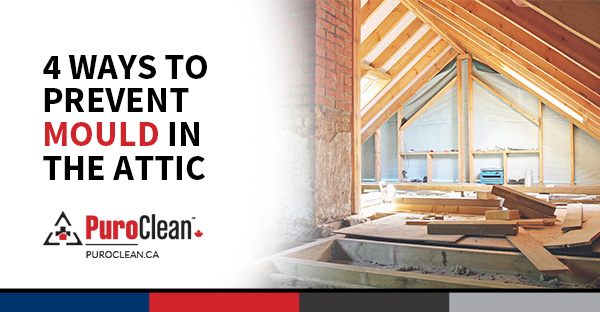4 Ways to Prevent Mould in the Attic
 Wherever there’s moisture, mould doesn’t take long to appear. This goes for most areas in a home, including the attic. The roof may leak, ventilation may be lacking, or appliances may blow air into the attic – these are some of the most common causes of attic mould growth. Below are essential tips to reduce moisture and create a mould-free environment in an attic:
Wherever there’s moisture, mould doesn’t take long to appear. This goes for most areas in a home, including the attic. The roof may leak, ventilation may be lacking, or appliances may blow air into the attic – these are some of the most common causes of attic mould growth. Below are essential tips to reduce moisture and create a mould-free environment in an attic:
Things to inspect in the attic to find leaks:
- The wood (such as joists and rafters) and insulation
- The area where the two roofs join at an angle
- The area around attic plumbing stacks
After checking for leaks, proper attic ventilation must be ensured. The moisture levels in the attic increase without sufficient ventilation. It is particularly important in winter, when warm air rises to ceiling, enters the attic, and condenses on the cold surfaces of the attic. The attic should have adequate ventilation so that moisture created by condensation can escape. Additionally, attic vents (soffit, ridge, and gable-mounted vents) should not covered with insulation.
Furthermore, the attic must be insulated properly. Attic insulation controls the temperature and moisture levels in the attic. In winter, attic temperature should be at or near the outside air temperature to prevent condensation and ice dams. The attic floor must be properly insulated to minimize the air transfer between the living area and the attic. Also, the insulation of other areas and surfaces in the attic, such as those of heating ducts, must be in good shape.
A final tip to prevent attic mould is making sure that appliances vent to the outside. Dryer, kitchen, and bathroom vents should always blow the air to the outside and not in the attic. Otherwise, the attic ventilation system could become overwhelmed and may not be able to eliminate the resulting moisture efficiently.
More home ventilation tips are available in this article and six unusual areas in a home where mould may hide can be found here. The PuroClean team stands ready to provide professional restoration services to any property affected by fire, water or mould damage.
Follow us on Twitter, Facebook, Google+ and LinkedIn to get our notifications!


